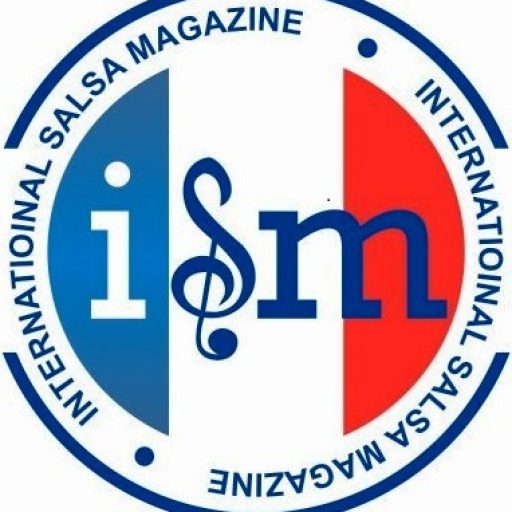
The Secretary of International Salsa Magazine hereby requests all whom it may concern to extend all journalistic courtesies and permits to the journalist of ISM named herein
Latinos and their music have managed to conquer all types of spaces over time thanks to their talent and dedication, and one of them has been The NAMM Show, which is the event to which we are going to dedicate the next lines to be read.
The NAMM Show is an annual trade fair for music producers from all over the world which is organized by The National Association of Music Marchants (NAMM) and is intended to receive suppliers, distributors, social communicators, artists and guests from NAMM member companies. The event takes place in January of each year at the Anaheim Convention Center in California, United States, and the 2024 edition took place between January 23 and 35.
Among the main reasons for the realization The NAMM Show we can mention the promotion of the music industry and the producers offered to consumers anywhere on the planet, which makes it a very important space for anyone who wants to have a place in this highly competitive business.
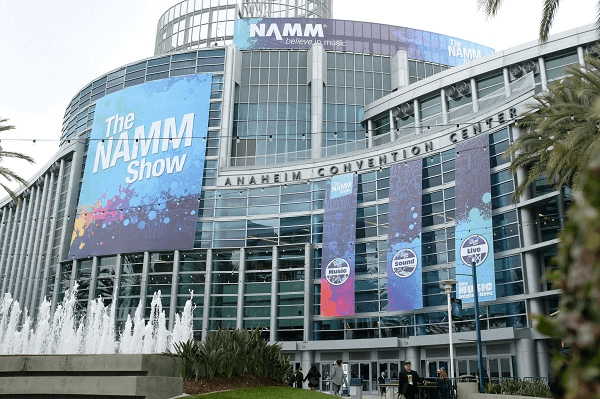
Before delving into what The NAMM Show is, we think it is appropriate to talk about the organization in charge of realizing it and what exactly it does.
The National Association of Music Merchants is a non-profit association that focuses on promoting the advantages and benefits of music and seeks to strengthen the marketing of music products in general as much as possible.
The association was founded in 1901 under the name of The National Association Piano Dealers of America, but since it had much more ambitious aims for the future, the name was changed to NAMM. Today, NAMM and its trade shows function as a meeting center and bank of information for all who wish to stay abreast of the very latest in music products, recording, sound, among other things. However, it is important to note that activities and courses created by NAMM were offered to interested parties of all ages and musical backgrounds.
An important division of Namm that must also be mentioned is The NAMM Foundation, which is a subdivision founded in 2006 of the aforementioned organization that seeks to promote active participation in the creation of music making use of scientific research, donations and public service. A very important element of The NAMM Foundation is that it relies on the generosity of industry members and is based on donations and trade association activities.
This foundation provides opportunities for people of all ages, funding scientific research in music and music education.

The NAMM Show is considered as one of the largest trade shows in the music industry to be found on a global level and the most important producers, distributors, artists, record labels, music entrepreneurs and accredited members of the media get together every year at this lavish event to promote everything it has to offer to its audience.
All who enters The NAMM Show will see vendors displaying all kinds of products in stands, allowing traders and producers present to keep up with the latest in music, reach all types o agreements and make purchases of what they need for the next few months of work. In addition to that, the event draws renowned musicians, who also exhibit their own models and equipment to those who may want to acquire them.
Among some important facts about The NAMM Show, we can mention that 2018 was very important for the event, as it was the year in which it began to be held at the Anaheim Convention Center, joined the Audio Engineering Society and organized the Parnelli Awards, which are the prizes that reward all those professionals and companies that work behind the scenes so that everything works such as lights, effects, projection, among other areas.
Three years later, The NAMM Show was not held in January due to the Covid-19 pandemic, so instead, NAMM held a virtual meeting which it named ”Believe In Music Week” starting on January 18 and had over 500,000 views from the general NAMM membership. While it is true that this event was about The NAMM Show every year, its purposes were very similar, as it sought to answer the immediate needs of the companies that are part of NAMM through training for opinion leaders who lead each of the music industry segments, especially at a time as complicated as those experienced back then.
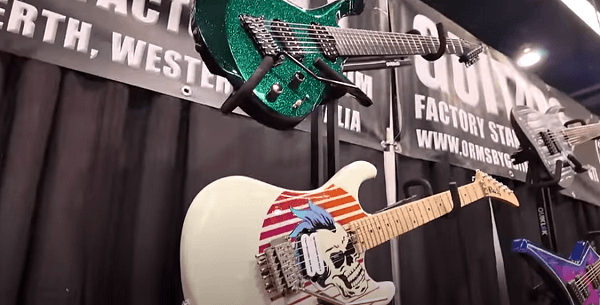
Once the pandemic began to decline, fortunately the event was again held at the Anaheim Convention Center in 2022 with a three-day trade show that compensated perfectly for the previous year’s lockout.
In 2023, the trade show held in April of that year welcomed more than 46,700 attendees from more than 120 countries and more than 1,200 exhibitors representing more than 3,000 brands overall, making it one of the largest and most beat-attended editions in recent years. This is not surprising due to the quarantine.
As for this year’s edition, the event had a number of 1600 stands offering their music products, 3500 brands and about 62,000 attendees.
Read also: Gabriel from the band Changüí Majadero talks about traditional Cuban Music
Venezuelan singer, percussionist and music teacher Omar Ledezma Jr. has already talked to us in the past and has revealed important details regarding his life and career, but this time, our editor Eduardo Guilarte has been in charge of interviewing him and revealing some unknown details about his different facets professionally and personally.
Is such a pleasure to have the chance to talk to one of the most talented Latin musicians who currently lives in the San Francisco Bay Area and know so many things that the artist had not previously revealed.
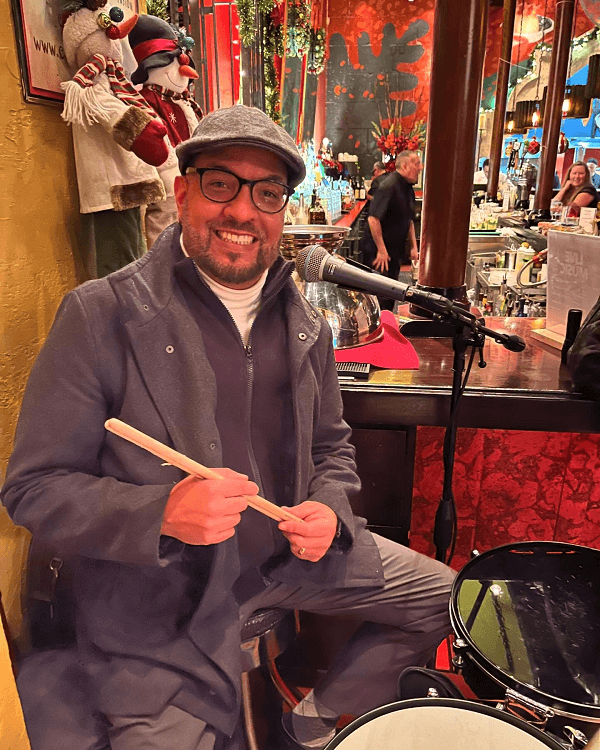
Omar Ledezma Jr. was born on February 17, 1972 in Caracas, Venezuela, and was raised in a very close family that gave him a lot of love and care since he was a child. Both the Ledezma and López families were very important in his growth, but it was from the Ledezma’s that he got his musical vein.
His mother and cousin José Vicente Rodríguez López decided to enroll him in the marching band at the Claret School, where he had his first contact with music by playing the snare drum, an instrument he was first assigned to play. It is also in the band where he started making friends with other teens who were already forming gaitas groups to compete in contests related to this traditional Venezuelan genre.
When he turned 16, he began to participate in these gaitas inter-school competitions in 1987 and 1988. In 1989, he participated in his first big musical event at the nightclub Mata de Coco. Omar assures that this was the official start of his career in a more professional way. A few years later, going hand-in-hand with his father, he began to take a deeper interest in music as a profession and wanted to experiment with other genres such as Afro-Cuban music and Latin jazz.
This path led him to join the orchestra La Charanga Clásica led by Mr. Frank Luzón. While playing there, he met several inspiration timbaleros such as Daniel Cádiz (from the Andy Durán Orchestra).
In parallel with all of the above, Omar was admitted to study in law school at the Santa María University, so he shared his time between his university studies and his professional musical activities. In his spare time outside the university, he played Latin jazz and was formed as a percussionist with his orchestra.
In 1995, Omar graduated as a lawyer as part of the class ”Honor a Venezuela” ranked in 12th place among his classmates. Although today he is not engage in law at all, he considers that having continued his studies was very important to him as a person because he would have a base on which to stand on in case his plans with music fell through.
However, the artist never thought about practicing law, since he was very clear that it would be difficult to do so due to the legal situation in Venezuela, so he continued to focus on his great passion, which was music. Besides, after analyzing it, he decided that he did not have a natural talent for that career.
In parallel, during those years as a law student, he made a trip to Cuba, which he claims changed his life completely. Some friends he made there, when seeing his skills as a musician, told him that he could be studying law, but that his life was and would be music forever.
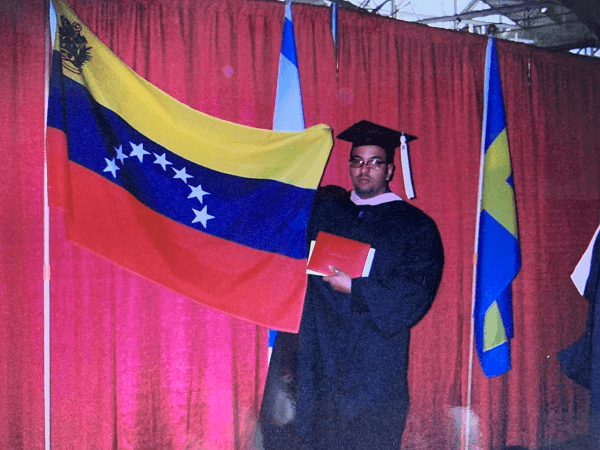
Just a few years after graduating, specifically in 1998, Omar made the decision to move to the United States looking for new opportunities and describes this trip as an exploring experience because many of his friends, orchestra fellows and acquaintances from the musical environment in general started taking new directions in the mid 90’s. The young man knew he wanted to do the same and chose the city of Boston to settle in at first.
Although he finally moved to Boston in 1998, already in 1997, his mother gave him the idea of going to the United States with an open ticket so he could decide whether to stay permanently or return. In the end, he opted not to use the return ticket and stayed in Boston to try to enter any music school through a scholarship.
After checking several options, he chose Berklee College of Music because it was the only college that allowed him to study composition and arranging as hand percussionist, so he auditioned to be admitted and was selected in the fall of 1999. He obtained a 70% scholarship, but he had to work hard to get the remaining 30%. In that sense, Omar assures that the same school helped him to obtain the corresponding permits to work legally in the country and thus be able to pay the percentage that is not covered by the scholarship.
Omar also told us that it was his friend Gonzalo Grau who helped him do the demo with which he auditioned to enter Berklee and it was a song of his own titled ”Cacao”. Today, he assures that that recording gave him one of the greatest opportunities he has ever had in life, which was to study there. He spent a total of four years studying in that institution and graduated in 2003.
During his undergraduate studies at Berklee, Omar had the option to study business and intellectual property and his lawyer’s training made it easier for him, but he defines himself as a ”natural born performer” and his life was the stage, so he did not see himself stuck in an office solving cases.
One of the first jobs Omar had in Los Angeles was replacing the singer from Johnny Polanco’s prestigious orchestra and that one that helped him take that place was Ray Barreto’s flautist, the late Artie Webb. The concert was held at the Mayan.
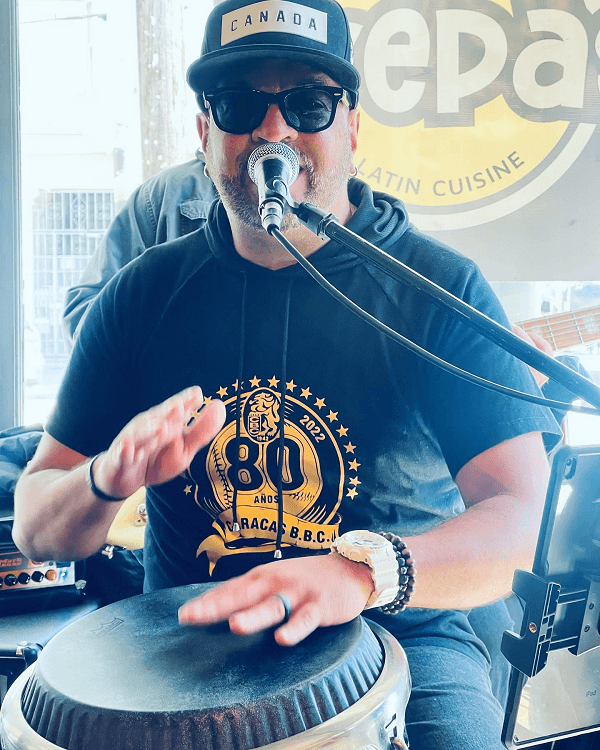
As to the family part, Omar told us that he had married his wife Jennifer Radakovich about seven or eight years ago, but they have no children for the moment. This is because they are still analyzing their opportunities to settle permanently in the state of California, so he assures us that they are still building their future as a couple and as a family.
Jennifer’s family comes from Serbia and settled in Detroit, Michigan. They had to leave their country, which was then the former Yugoslavia because of the war that went on in the territory at the time. In fact, at a family reunion, his in-laws told him that his wife’s father arrived in the country on the boat anchored in Long Beach, California, The Queen Mary.
Omar Ledezma started his journey with Pacific Mambo Orquesta practically since its foundation in October 2010, when he started playing at Café Cocomo. Santana’s timbalero Karl Perazzo, who was already included in the lineup of the venue, proposed him to go to this place to play as a percussionist on Monday nights. The problem was that there was no money to pay him for the moment.
That’s when the directors of Pacific Mambo, Christian Tumalan and Steffen Kuehn, proposed to the owners of Cafe Cocomo to give them some space to have band practice. These Monday meetings ended up being paid rehearsals open to the public in exchange for 10 dollars a night. This lasted some years in which the 20 members of the orchestra were in charge of developing much of the repertoire that has made them famous internationally.
About this time, Omar said that, on several occasions, he and his orchestra fellows sat down to talk about the continuity of the band owing to the lack of money. The wonderful thing is that everyone always voted in favor of their stay in the group despite the adversities. According to the Venezuelan musician, it was this hunger and desire to succeed that made the orchestra what it is today.

These efforts worked and Pacific Mambo Orquestra managed to win their first and only Grammy so far in 2014. That year began with the orchestra’s appearance in one of the main banners of the iTunes page for a little over a week, which gave them a lot of popularity at that time and was not common for Latin artists and groups.
That same year, the group began touring with Tito Puente Jr. in August and were so successful that Omar and five other members of the group decided to begin campaigning for that year’s Grammys via e-mails to all the members of the jury promoting their latest album. Then, on tour, they received the news of their nomination (the second of Omar’s career), but they did not think they would win.
Much to the surprise of Omar, in January 2014, he received word that Pacific Mambo Orquesta won its first Grammy in the category of Latin Tropical Album of the Year. This event changed the lives of everyone in the group to the extent that large media outlets started looking at them. One of them was world-famous Billboard magazine, which published a piece talking about the band and its talents.
It is important to stress that, although it was an experience the musician will never forget in his life, he is aware that this is in the past and has to look ahead and focus on his future successes. At this moment, Omar and his companions are focused on making up for time lost during the pandemic and performing all the activities that confinement prevented them from doing.